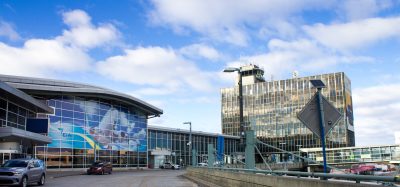Interview Spotlight: Csaba Gergely, Senior ATM Advisor, HungaroControl
- Like
- Digg
- Del
- Tumblr
- VKontakte
- Buffer
- Love This
- Odnoklassniki
- Meneame
- Blogger
- Amazon
- Yahoo Mail
- Gmail
- AOL
- Newsvine
- HackerNews
- Evernote
- MySpace
- Mail.ru
- Viadeo
- Line
- Comments
- Yummly
- SMS
- Viber
- Telegram
- Subscribe
- Skype
- Facebook Messenger
- Kakao
- LiveJournal
- Yammer
- Edgar
- Fintel
- Mix
- Instapaper
- Copy Link
Posted: 26 February 2018 | Csaba Gergely | No comments yet
Csaba Gergely, Senior ATM Advisor at HungaroControl (Hungarian Air Navigation Service Provider) discusses how their products can help the airport industry move forward and what’s in store for the company in the future.
In what ways is HungaroControl supporting the aviation and airport industry’s mission to become more innovative?
Our mission is to provide safe and efficient air navigation services for all our customers. However, we are also unique as we are breaking ground by exploring how we can shape the future of our industry through innovation, beyond the traditional role of an ANSP; at all levels of our organisation, we are committed to partnering technology with our professional workforce to deliver better outcomes for the industry. As safety primacy is paramount, the adoption of new technologies and processes can sometimes be challenging and time consuming. We understand this behaviour, and with an earnest focus on cultural flexibility, we have overcome this innovation barrier. In the history of mankind there were always actors who proved that ambitious targets are achievable, and who paved the way for others to follow. HungaroControl is one of these pioneers, and in many cases will deliver solutions which are innovative and improve the safe and efficient delivery of air navigation services.
How does remote tower technology enhance air traffic control and where is this technology being used today?
Primarily, the benefit case for remote tower technology is about delivering a cost-effective, flexible and scalable facility to provide air traffic control. However, we have extended the concept by coupling with advanced technologies. Building on the core video stream functionality, we deployed a more advanced camera (IR and PTZ) network and captured opportunities to enhance functionalities otherwise not possible, such as target detection, aircraft following functions and coupling with surveillance information.
The combination of this extended capability provides an increased situational scope and granularity for controllers, thereby augmenting the level of safety and assurance that can be delivered. This was demonstrated in 2016 when HungaroControl became the first ever to provide a live ATC service remotely for a medium-size airport at Budapest. Whilst at this scale, Budapest remains the only example of this technology being actively used, it is clear that there is a rapidly developing appetite to explore how remote tower technology can be used to supplant and enhance conventional visual operations.
How does HungaroControl’s Centre of Research, Development and Simulation (CRDS) support the industry’s goal to enhance air capacity and improve the environment?
CRDS is our research, development and simulation centre, and is Central Europe’s largest advanced air traffic management simulation facility. This state-of-the-art platform equips us with real-time and fast-time simulation capabilities that provide training and a cutting-edge decision-making capability to ANSPs and more broadly, the aviation industry. These simulation capabilities enable a cost-effective way to explore the impact of operational change initiatives to help change agents make more informed decisions regarding risk and benefit realisation. Furthermore, this capability can be extended to validate user acceptance of operational change initiatives, and how potential changes not only impact airspace users, but also the human performance of air traffic controllers. In order to create realistic and high-fidelity scenarios, CRDS offers an ‘at home’ ATM system HMI reproduction that is developed by our in-house developers.
Using this bespoke environment, in conjunction with in-depth monitoring and evaluation by our human factors specialists, decision-makers are able to foresee potential changes in human performance, and mitigate safety risks related to workload and situational awareness.
Issue
Related topics
Air traffic control/management (ATC/ATM), Airport development, Airside operations, Capacity, New technologies, Risk Management Solutions, Safety, Sustainability


















